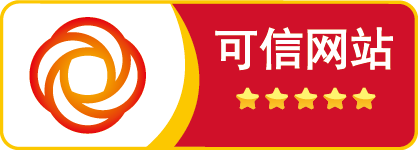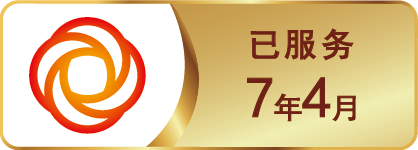澳洲航空公司
出自 MBA智库百科(https://wiki.mbalib.com/)
澳洲航空公司官方網站網址:http://www.qantas.com.au/
目錄[隱藏] |
澳洲航空公司(QANTAS),或稱澳大利亞快達航空公司,簡稱澳航。
澳洲航空公司成立於1920年,是澳大利亞最大型及歷史最悠久的航空公司,同時也是全球歷史第三悠長的,在荷蘭國營的KLM及哥倫比亞的Avianca航空之後。
澳航集團經營的航空業務包括澳洲航空、QantasLink、捷星和捷星亞洲,以及其他與航空相關的各種業務。
歷史悠久的澳航袋滑鼠志,象徵著可靠、安全、先進技術及優質服務。
澳洲航空提供航班服務來往香港及澳洲,當中城市包括阿得萊德、布裡斯本、開恩茲、黃金海岸、墨爾本、柏斯和悉尼。
除此之外,澳洲航空每天提供不停站航班服務來往香港及倫敦。
澳航起源
澳航於1920年11月16日在昆士蘭溫頓成立,由Paul McGuiness、Hudson Fysh、Fergus McMaster和Arthur Baird組成昆士蘭和北領地航空服務有限公司[1]。該航空公司的第一架飛機是以1425英鎊購買的Avro 504K型飛機。這架飛機的巡航速度為105公裡/小時(65英里/小時),搭載了一名飛行員和兩名乘客。84歲的內陸先鋒亞歷山大·肯尼迪是第一位乘客,獲得了一號機票。該航空公司運營的航空郵件服務由澳大利亞政府補貼,連接昆士蘭西部的鐵路樞紐。
1926年至1928年間,澳航在其長距離機庫中建造了七架德哈維蘭DH.50和一架許可的DH9。1928年,澳航包機從Cloncurry起飛,進行了澳大利亞皇家飛行醫生服務隊的首航。
飛艇與戰爭——1934年至1945年
1934年,澳航有限公司和英國帝國航空公司(英國航空公司的前身)成立了一家新公司,即澳航帝國航空有限公司。每個合作伙伴持有49%的股份,其中2%由獨立仲裁人控制。這家新航空公司於1934年12月開始運營,使用老式的DH50和DH61雙翼飛機在布裡斯班和達爾文之間飛行。
QEA從1935年5月開始走向國際,當時達爾文的航班使用較新的德哈維蘭DH-86英聯邦客機延伸至新加坡。帝國航空公司運營的其餘航班直達倫敦。1938年7月,這一行動被每周三次使用短褲S.23帝國飛艇的飛艇服務所取代。悉尼至南安普敦的航班耗時九天,乘客在酒店過夜。[6]在該航班運營的和平一年中,該航班盈利,94%的航班準時到達。這項服務一直持續到1942年2月新加坡淪陷。敵人的行動和事故摧毀了十人艦隊的一半,當時大部分艦隊被澳大利亞政府接管服役。
Flying boat services were resumed with American built PBY Catalinas in July 1943, with flights between Perth and Ceylon (now Sri Lanka). This linked up with the BOAC service to London, maintaining the vital communications link with England. The 5,652km non-stop sector was the longest flown up to that time by any airline, with an average flying time of 28 hours. Passengers received a certificate of membership to the "Order of the Double Sunrise" as the sun rose twice during the flight. These flights continued until July 1945.
The post-war years — 1945 to 1959
After World War II, QEA was nationalised, with the Australian Labor government led by Prime Minister Ben Chifley buying the shares of both Qantas Limited and BOAC. Nationalised airlines were normal at the time, and the Qantas board encouraged this move.
Shortly after nationalisation, QEA began their first services outside the British Empire — to Tokyo via Darwin and Manila with Avro Lancastrian aircraft.These aircraft were also deployed between Sydney and London in cooperation with BOAC, but were soon replaced by Douglas DC-4s. Services to Hong Kong began around the same time.
In 1948, the airline took delivery of Lockheed L.049 Constellations. In 1952, Qantas expanded across the Indian Ocean to Johannesburg via Perth, Cocos Islands and Mauritius, calling this the Wallaby Route. Around this time, the British Government placed great pressure on Qantas to purchase the De Havilland Comet jet airliner, but Hudson Fysh was dubious about the economics of the aircraft and successfully resisted this. The network was expanded across the Pacific to Vancouver via Auckland, Nadi, Honolulu and San Francisco in early 1954 when it took over the operations of British Commonwealth Pacific Airlines (BCPA). This became known as the Southern Cross Route.
In 1956, Qantas became the first non US airline to order the Boeing 707 jet airliner. Contrary to popular belief, the special shortened version for Qantas was the original version Boeing offered to airlines. Boeing lengthened the aircraft by ten feet for all other customers, which destroyed the economics for Qantas. The airline successfully negotiated with Boeing to have the aircraft they had originally contracted for.
In 1958, Qantas became one of the very few around-the-world airlines, operating round-the-world services from Australia to London via Asia and the Middle East (Kangaroo route) and via the Southern Cross route with Super Constellations.It took delivery of new turboprop Lockheed Electra aircraft in 1959.
The jet age — 1959 to 1992
The first jet aircraft on the Australian register (and the 29th 707 built) was registered VH-EBA and named City of Canberra. This aircraft returned to Australia as VH-XBA in December 2006 for display in the Qantas Founders Outback Museum at Longreach, Queensland.The Boeing 707-138 was a shorter version of the Boeing 707 that was operated only by Qantas. The first jet service operated by Qantas was on 29 July 1959 from Sydney to San Francisco via Nadi and Honolulu. On 5 September 1959, Qantas became the third airline to fly jets across the Atlantic — after BOAC and Pan Am, operating between London and New York as part of the service from Sydney.All of the turbojet aircraft were converted to upgraded turbofan engines in 1961 and were rebranded as V jets from the Latin vannus meaning fan.
Air travel grew substantially in the early 1960s, leading Qantas to order the larger Boeing 707-338C series of aircraft. In 1966, the airline diversified its business by opening the 450 room Wentworth Hotel in Sydney. The same year, Qantas placed early options on the new Concorde airliner. At the time supersonic flight was thought of as the way of the future, but along with most airlines in the world the orders were eventually cancelled. Also in 1966, another around-the-world route was opened, the Fiesta route. Sydney to London via Tahiti, Mexico City, and Bermuda.
In 1967, the airline placed orders for the new Boeing 747. The aircraft could seat up to 350 passengers, a major improvement over the Boeing 707-138's. Orders were placed for four aircraft with deliveries commencing in 1971. The later delivery date allowed Qantas to take advantage of the -200B version, which better suited its requirements. Also in 1967, Qantas Empire Airways changed its name to just Qantas Airways, the name of the airline today.
When Cyclone Tracy devastated the one horse town of Darwin at Christmas 1974, Qantas established a world record for the most people ever embarked on a single aircraft when they evacuated 673 people on a single Boeing 747 flight. They also established a record embarking 327 people on Boeing 707 VH-EAH. Later in the decade, Qantas placed options on two McDonnell Douglas DC-10 aircraft for flights to Wellington, New Zealand. These were not taken up, and two Boeing 747SP were ordered instead. In March 1979, Qantas operated its final Boeing 707 flight from Auckland to Sydney, and became the only airline in the world to have a fleet that consisted of Boeing 747s only. That same year Qantas introduced Business class — the first airline in the world to do so.
The Boeing 767-200 was introduced in 1985,for New Zealand, Asia and Pacific routes. The same year, the Boeing 747-300 was introduced, featuring a stretched upper deck. The Boeing 747 fleet was upgraded from 1989 with the arrival of the new Boeing 747-400 series. The delivery flight of the first aircraft was a world record, flying the 18,001km from London to Sydney non-stop.
In 1990, Qantas established Australia Asia Airlines to operate services to Chinese Taiwan. Several Boeing 747SP and Boeing 767 aircraft were transferred from Qantas service. The airline ceased operations in 1996.
Privatisation — 1992 to the present
The Australian Government sold the domestic carrier Australian Airlines to Qantas in August 1992, giving it access to the national domestic market for the first time in its history. The purchase saw the introduction of the Boeing 737 and Airbus A300 to the fleet — though the A300s were soon retired.Qantas was privatised in March 1993, with British Airways taking a 25% stake in the airline for A$665m.After a number of delays, the remainder of the Qantas float proceeded in 1995. The public share offer took place in June and July of that year, with the government receiving A$1.45b in proceeds. The remaining shares were disposed of in 1995-96 and 1996-97.Investors outside Australia took a strong interest in the float, securing 20% of the stock which, together with British Airways 25% holding, meant that, once floated on the stock exchange, Qantas was 55% Australian owned and 45% foreign owned. By law, Qantas must be at least 51% Australian-owned, and the level of foreign ownership is constantly monitored.
In 1998, Qantas co-founded the oneworld alliance with American Airlines, British Airways, Canadian Airlines, and Cathay Pacific. The alliance commenced operation in February 1999 , with Iberia and Finnair joining later that year. Oneworld markets itself at the premium travel market, offering passengers a larger network than the airlines could on their own. The airlines also work together to provide operational synergies to keep costs down.
The main domestic competitor to Qantas, Ansett Australia, collapsed on 14 September 2001.Market share for Qantas immediately neared 90%, with the relatively new budget airline Virgin Blue holding the remainder. In order to capitalise on this event, Qantas ordered Boeing 737-800 aircraft — obtaining them a mere three months later.This unusually short time between order and delivery was possible due to the terrorist attacks in the United States on 11 September — the subsequent downturn in the US aviation market meant American Airlines no longer needed the aircraft they ordered. The delivery positions were reassigned to Qantas on condition the aircraft remained in American Airlines configuration for later possible lease purposes.
At the same time, Virgin Blue announced a major expansion in October 2001,which was successful in eventually pushing the Qantas domestic market share back to 60%. To prevent any further loss of market share, Qantas responded by creating a new cut-price subsidiary airline Jetstar. This has been successful in keeping the status quo at around 65% for Qantas group and 30% for Virgin Blue with other regional airlines accounting for the rest of the market.
On 13 December 2004, the first flight of Jetstar Asia Airways took off from its Singapore hub to Hong Kong, marking Qantas' entry into the Asian cut-price market. Qantas owns 44.5% of the carrier.
Qantas has also expanded into the New Zealand domestic air travel market, firstly with a shareholding in Air New Zealand and then with a franchise takeover of Ansett New Zealand. In 2003, Qantas attempted and failed to obtain regulatory approval to purchase a larger (but still minority) stake in Air New Zealand. Subsequently Qantas stepped up competition on the trans-Tasman routes, recently introducing Jetstar to New Zealand. British Airways sold its 18.5% stake in Qantas in September 2004 for £425 million, though keeping its close ties with Qantas intact.
Qantas had also developed a full-service all economy international carrier focused on the holiday and leisure market, which had taken on the formerly used Australian Airlines name. This airline ceased operating its own liveried aircraft in July 2006, with the staff operating Qantas services before being closed entirely in September 2007, with the staff joining the new Qantas base in Cairns.
Airline Partners Australia takeover bid
In December 2006 following detailed negotiations, the Qantas Board had received a revised proposal from Airline Partners Australia to acquire 100 percent of the Company for $5.60 ($5.45 after special distribution) cash per share. Subsequently the Qantas Board recommended the revised Offer From Airline Partners Australia, a consortium comprising Allco Equity partners, Texas Pacific, Macquarie Bank, Onex and Allco Finance.
Margaret Jackson ( Former Chairman) said the revised proposal provided an attractive premium for Qantas shareholders, being:
- 33 percent higher than the closing share price of $4.20 on 6 November 2006, the day before the first speculation about the offer; and
- 61 percent above Qantas' volume weighted average share price of $3.48 over the six months to that date.
The proposal will be implemented by way of an off-market takeover bid, which will be subject to certain conditions including a 90 percent minimum acceptance condition.
The revised proposal followed negotiations with APA since the Board's rejection of its initial proposal. These negotiations resulted in the removal of unacceptable conditions and a substantial break fee as well as an increase in the price from $5.50 to $5.60 per share.
Under the terms of the offer, the interim dividend that would otherwise be payable in April 2007 will not be available. However, the Board decided that a fully franked special dividend could be paid during the bid period, in which case the offer consideration would be reduced by the dividend amount.
The take over proposal involves:
- Qantas transitioning to a privately owned company and de-listing from the Australian Securities Exchange;
- Qantas remaining majority owned and controlled by Australians; and
- retention of the current management team, who will invest in the privately owned company.
Mr Geoff Dixon would continue as Chief Executive Officer and Mr Peter Gregg would remain Chief Financial Officer under the new ownership structure.
As of the start of April 2007 only 30% of shares had been secured by APA, so on 12 April 2007 the consortium lowered the minimum acceptance level to 70 percent. On Friday evening 4 May 2007, APA announced that it appeared its offer had failed to reach the 50 per cent level required for the $11.1 billion private equity buyout to proceed. The consortium had only secured 46 per cent of the national carrier by the 7.00pm deadline for the takeover offer that day. APA was counting on a last-minute rush of acceptances from hedge funds to get the deal over the line. On Saturday 5 May 2007 the APA said a late acceptance from a large investor (Samuel Heyman)received after the 7:00pm deadline the previous evening meant it intended to press ahead with the bid. However, after the late acceptance was denied by the takeover board, APA decided to accept that the bid had failed, rather than pursue a protracted and uncertain legal battle in an attempt to keep it alive.
Its main international hubs are Sydney Kingsford Smith International Airport and Melbourne Airport. However, Qantas operates a significant number of international flights into and out of Singapore Changi Airport, Los Angeles International Airport, London Heathrow Airport, Brisbane Airport and Perth Airport. Its domestic hubs are Sydney, Melbourne, Brisbane and Perth airports, but the company also has a strong presence in, Adelaide, Cairns and Canberra airports. It serves a range of international and domestic destinations.
Qantas wholly owns Jetstar Airways, and JetConnect (which operates New Zealand domestic services) and QantasLink (including, Airlink, Sunstate and Eastern Australia Airlines).Qantas did have a minor 4.2% stake in Air New Zealand, however this was sold on 26 Jun 2007 for $NZ119 million. Qantas owns 49% of the Fiji-based international carrier Air Pacific. It owns 50% of both Australian Air Express and Star Track Express (a trucking company)[34], with the other 50% of both companies owned by Australia Post. Since its privatisation in 1993, Qantas has been one of the most profitable airlines in the world.It was recently voted 2nd best airline in the world in the 2006 World Airline Awards (with surveys conducted by Skytrax) behind British Airways.
Qantas has stepped up the expansion of Jetstar, with the launch of international services (in addition to existing trans-Tasman and Jetstar Asia flights) to leisure destinations such as Bali, Ho Chi Minh City, Osaka and Honolulu from November 2006. On some routes such as Sydney-Honolulu, Jetstar will supplement existing Qantas operations but many routes are new to the network. The lower cost base of Jetstar allows the previously unprofitable or marginal routes to be operated at greater profitability.
In recent years it has announced substantial new aircraft orders. Qantas ordered twelve Airbus A380-800, with options for twelve more. It will be the second airline (after launch customer Singapore Airlines) to receive an A380 and is now expected to receive four aircraft by the end of 2008 and seven by mid-2009, after Airbus reported further delays in the delivery. Qantas exercised 8 options on A380s, increasing firm orders to 20 on 29 October 2006. All aircraft are due to be delivered between 2008 to 2015. An additional four A330-200 aircraft (VH-EBE to EBH) were ordered to address capacity concerns due to the A380's service entry delay.
On 14 December 2005 Qantas announced an order for 115 Boeing 787-8 and 787-9 aircraft (45 firm orders, 20 options and 50 purchase rights).[39] The aircraft will allow Qantas to replace their 767-300 fleet, increase capacity and establish new routes. Jetstar will also operate 10 of the new aircraft on international routes.This announcement came after a long battle between Boeing and Airbus to meet the airline's needs for fleet renewal and future routes. The first of the 787s are scheduled to be delivered to Jetstar in August 2008, with the 787-9s coming in 2011.
Although Qantas did not choose the Boeing 777-200LR, it is rumoured that Qantas is still looking into buying aircraft capable of flying London-Sydney non-stop.
Qantas has offered a special promotion to American and Canadian tourists for several years called the "Aussie AirPass". It permits tourists to fly into Australia and receive up to three flight segments to various Australian locales for a flat fee.
Promotional activities
Qantas used a small promotional animation on its website to officially announce it will offer in-flight internet services on its fleet of A380s.Qantas also announced that it would trial in-flight use of mobile phones on one of its Boeing 767 aircraft. This will allow customers to send emails and text messages on board, but will not allow phone calls whilst in flight.Qantas has also launched Online Check in (OLCI) for its domestic Australian flights. Customers are now able to log on to qantas.com 24 hours before their flight departs, select their seat and print a boarding pass, enabling them to bypass check-in at the terminal.It recently re-introduced hot face towels for economy class on all long haul flights.
Qantas is responsible for some of the most successful marketing campaigns in Australian history[citation needed], with many advertising campaigns featuring renditions by children's choirs of Peter Allen's "I Still Call Australia Home", set to footage of breathtaking scenery. A much earlier campaign aimed at American television audiences featured an Australian koala, who of all things detested Qantas for bringing tourists to destroy his quiet life (his key tagline: "I hate Qantas"). Qantas is the main and shirt sponsor of the "Qantas Wallabies", the Australian national Rugby Union team.They also sponsor and have shirt rights to the Socceroos, who are Australia's national soccer team.

 无广告阅读
无广告阅读  免验证复制
免验证复制  微信支付
微信支付  支付宝
支付宝  PayPal
PayPal 














